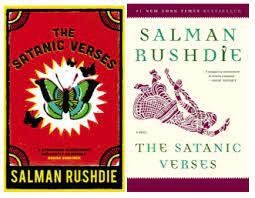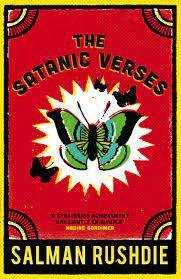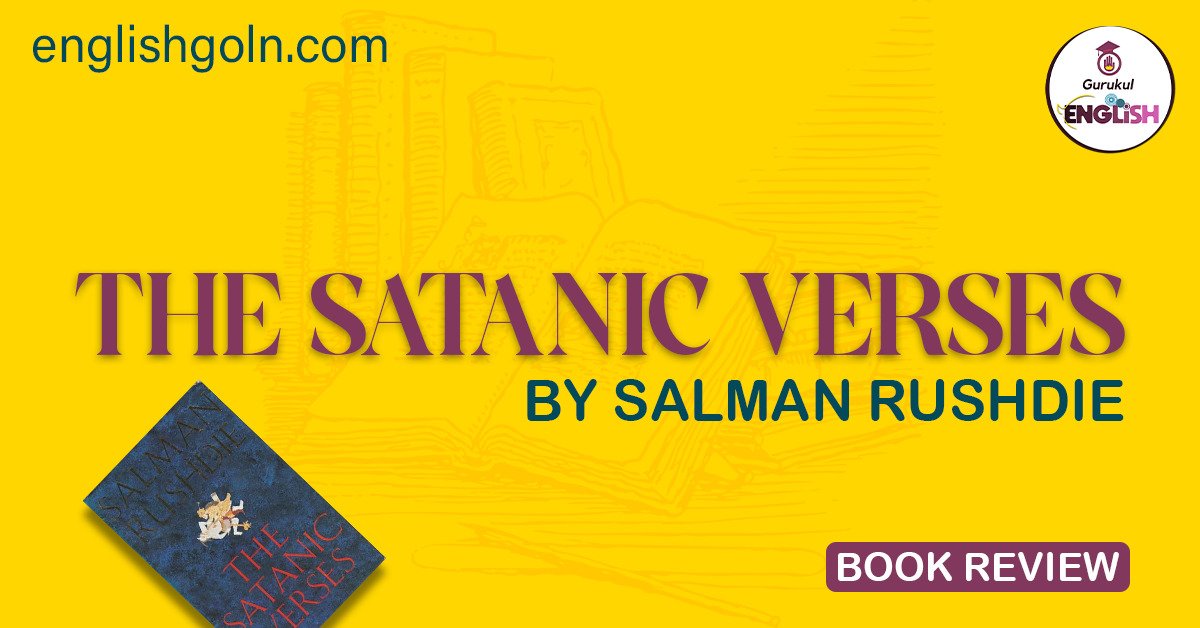Published in 1988, “The Satanic Verses” is one of the most controversial and debated novels of the 20th century. Salman Rushdie’s sprawling narrative weaves together magical realism, historical allegory, and sociopolitical commentary, making it a deeply ambitious work. The novel draws its title from an incident (deemed apocryphal by mainstream Islamic scholars) where Prophet Muhammad allegedly received and later renounced verses from the Qur’an that were supposedly influenced by the devil.

The Satanic Verses by Salman Rushdie
Plot Overview:
The novel intertwines the tales of two Indian expatriates, Gibreel Farishta and Saladin Chamcha. After a terrorist bombing destroys their plane, the duo miraculously survive, but with transformed appearances. Farishta takes on an angelic form, whereas Chamcha embodies a devilish figure. This transformational journey leads them through a series of fantastical events and dream sequences, with Farishta’s dreams being central to the narrative.
These dream sequences revolve around the birth of a prophet named Mahound, a thinly veiled portrayal of Prophet Muhammad, and the city of Jahilia, an allegorical representation of Mecca. Another subplot follows Ayesha, a prophetess leading a pilgrimage to Mecca and promising a miraculous event.
Throughout the novel, Rushdie tackles themes of identity, transformation, religious fundamentalism, colonialism, and the immigrant experience, with London serving as a backdrop for many of the novel’s events.

Themes and Analysis:
- Identity and Transformation: Both protagonists grapple with their personal identities. Farishta, previously a Bollywood actor portraying religious figures, confronts his new angelic form, while Chamcha, a voice actor, deals with his devilish transformation. This speaks to broader issues of cultural displacement and self-perception, especially among immigrants.
- Religious Ambiguity: The dream sequences offer a controversial reimagining of the origins of Islam. Through these, Rushdie questions the nature of religious revelations, the interplay between divine and diabolic influences, and the human hand in religious scripture.
- Colonialism and Post-colonialism: Chamcha’s desire to fit into British society and his subsequent alienation highlight the complexities of post-colonial identity. Rushdie critically examines the lingering effects of colonialism on the psyche of former colonies.
- Magical Realism: Drawing inspiration from Latin American authors, Rushdie uses magical realism to blur the lines between the fantastical and the real, making it a tool to explore psychological and sociopolitical realities.
Controversy:
The portrayal of certain religious elements led to accusations of blasphemy from some Muslim communities. In 1989, Iran’s Ayatollah Khomeini issued a fatwa, or religious decree, calling for Rushdie’s assassination, forcing the author into hiding for several years.
Many viewed the fatwa as a direct assault on freedom of expression, and it sparked a global debate on the limits of artistic freedom, religious sensitivities, and the potential dangers of self-censorship.

“The Satanic Verses” is a complex narrative that defies easy categorization. It is as much a tale of modern urban disillusionment as it is an exploration of religious and historical narratives. Rushdie’s rich prose and inventive storytelling make it a captivating read, but it’s also a novel that demands introspection and patience.
Beyond its literary merits, the book will forever be remembered for the intense debates it spurred on freedom of expression and the nature of religious belief. For anyone interested in post-colonial literature, magical realism, or the interplay between art and society, “The Satanic Verses” is an essential read.
